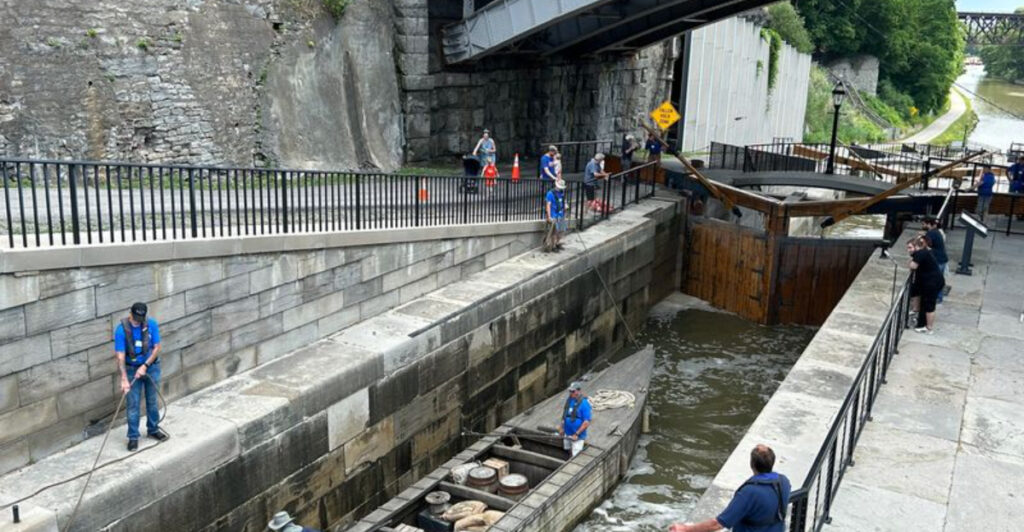Nestled along the Erie Canal, Lockport showcases remarkable 19th-century engineering that continues working today. The town grew around the challenge of lifting boats over the Niagara Escarpment, creating a 60-foot vertical water staircase. Visitors can watch these historic locks operate just as they did nearly two centuries ago, offering a living connection to America’s canal-building era.
The Magnificent “Flight of Five” Locks
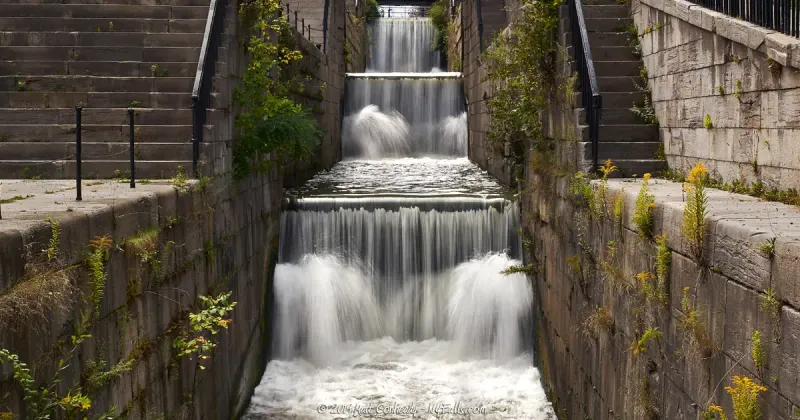
Engineering marvel meets living history at Lockport’s famous Flight of Five. These five sequential locks, built in the 1840s, conquered the imposing Niagara Escarpment by raising boats 60 feet through a stone staircase.
Unlike most historic structures that sit idle behind velvet ropes, these locks remain functional. Their massive wooden gates swing open using the same mechanism designed by 19th-century engineers.
The locks represent the largest intact section of the original Erie Canal still standing in America. Each chamber fills and empties through ground-level wickets, demonstrating the elegant simplicity of canal engineering that helped build a young nation.
Lock Tenders: Keeping Tradition Alive
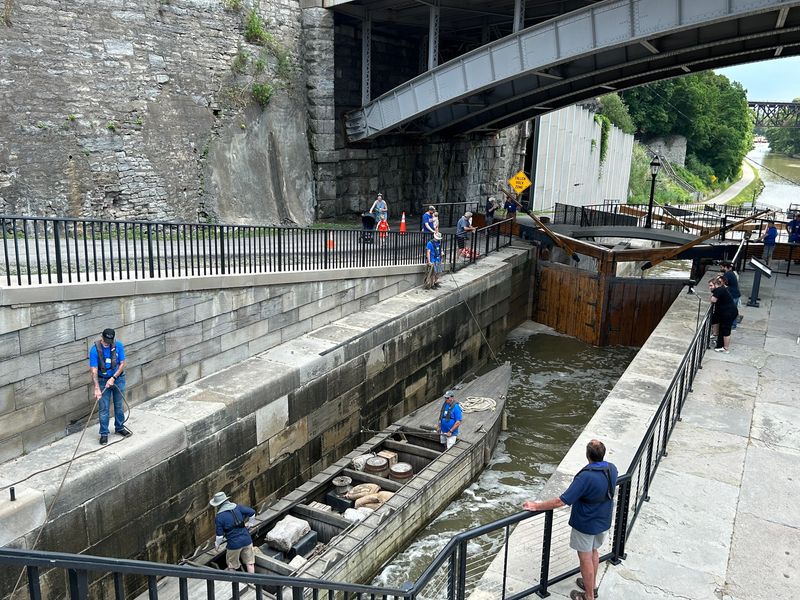
Volunteers in period clothing breathe life into Lockport’s canal heritage. These dedicated lock tenders manually operate the massive wooden gates using the original balance beam system, their muscles providing the only power needed.
Watching them work the locks feels like stepping through a time portal. Each turn of the valve and push of the beam follows the exact procedures established generations ago.
Many tenders share fascinating stories passed down through families with deep canal connections. Their knowledge transforms a simple mechanical demonstration into a rich narrative about the canal workers who built America, creating a personal connection between visitors and the past.
Interactive Museums Bring Canal History to Life
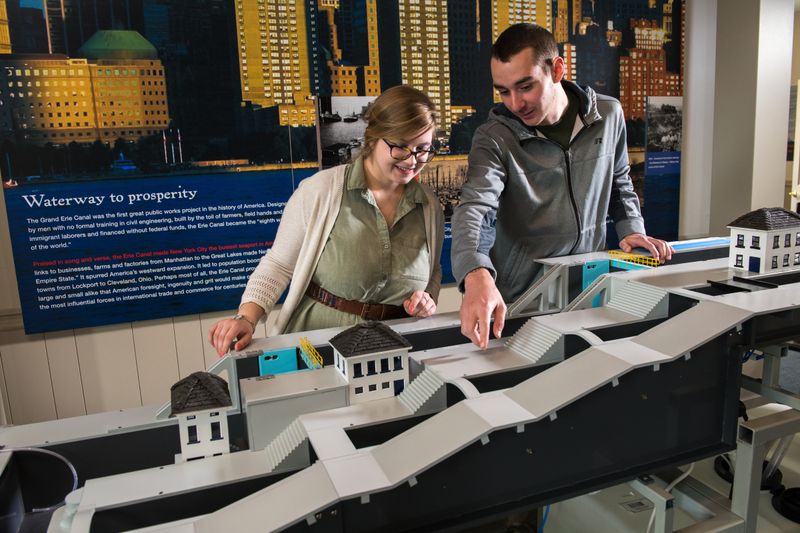
Hands-on exhibits transport visitors back to canal-building days at Lockport’s Erie Canal Discovery Center. Life-sized figures of canal diggers and interactive water lock models explain the engineering principles in ways both children and adults appreciate.
The nearby Locks District Museum houses artifacts recovered during lock restoration. Tools, personal items, and even preserved food containers tell the human story behind the monumental construction project.
Guided canal boat rides provide the ultimate perspective—experiencing the locks from water level. As your boat rises or descends through the chambers, narrators explain how this waterway transformed New York from wilderness to commercial powerhouse in just a few decades.
Old Meets New: Modern Locks in Action
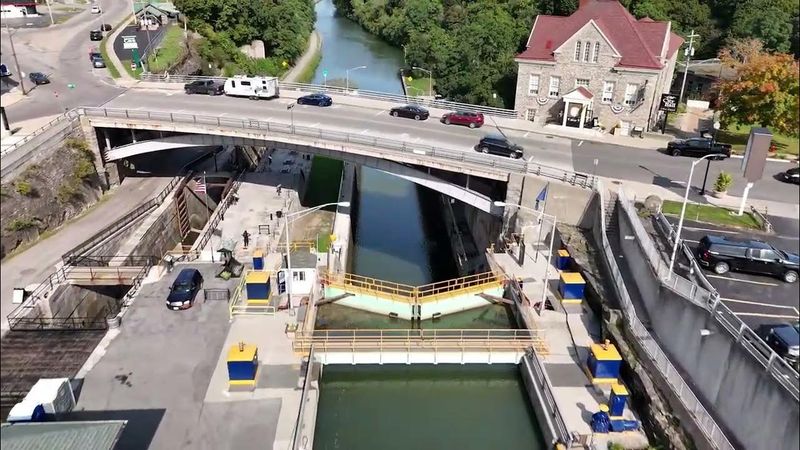
Right beside the historic Flight of Five stands a testament to progress—the modern Locks 34 and 35. These steel-gated giants perform the same function as their stone ancestors but with hydraulic power and electronic controls.
Thousands of pleasure boats and occasional commercial vessels still navigate these locks annually. Standing on the observation deck, visitors witness the surprising spectacle of boats rising and falling as if by magic.
Few places on earth showcase 170 years of continuous technological evolution side-by-side like this. The juxtaposition of old limestone chambers beside gleaming modern counterparts creates a fascinating timeline of American engineering ingenuity that continues serving boaters today.
A Community Shaped by Water
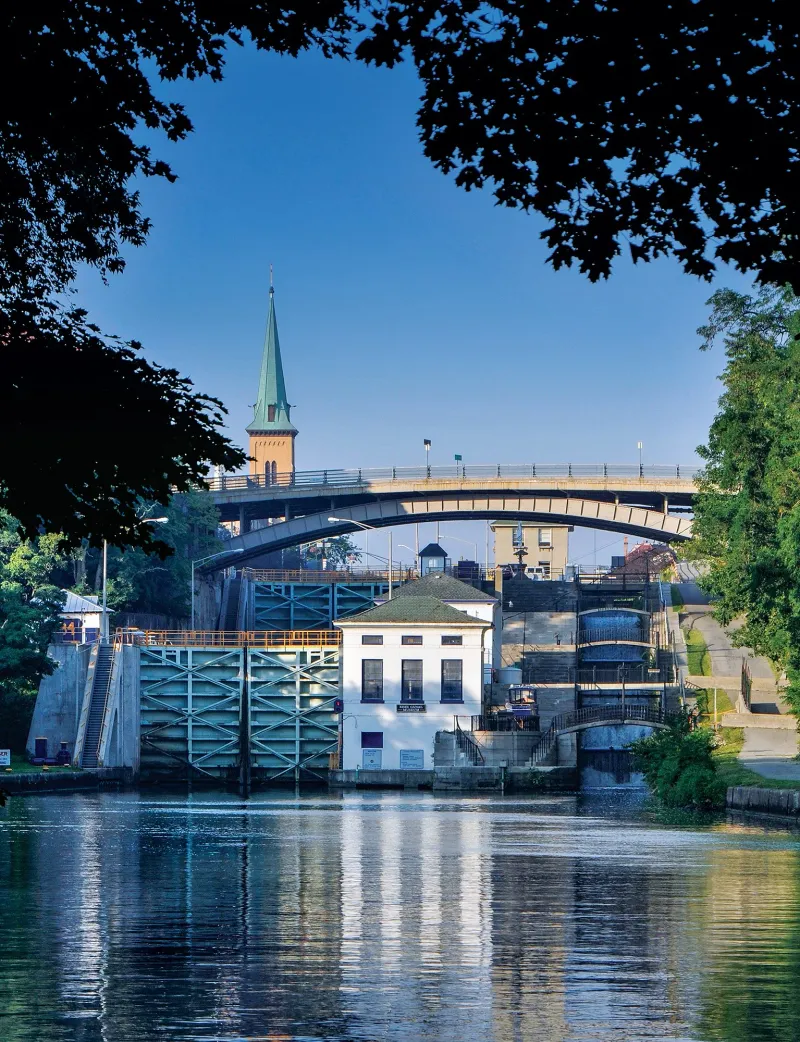
Beyond the engineering wonders, Lockport’s streets tell stories of the people who built and operated this canal town. Nineteenth-century stone buildings line Main Street, many constructed by Irish and Scottish immigrants who came to dig the canal and stayed to build a community.
The waterway’s influence appears everywhere—from street layouts that parallel the canal to historic taverns where lock workers once gathered. Local restaurants serve dishes inspired by canal-era recipes, while shops occupy former warehouses where goods once transferred between boats.
Exploring Lockport reveals how thoroughly water shaped this place. The town’s very name celebrates its defining feature, creating an authentic American community where daily life still revolves around the rhythmic rising and falling of canal waters.

